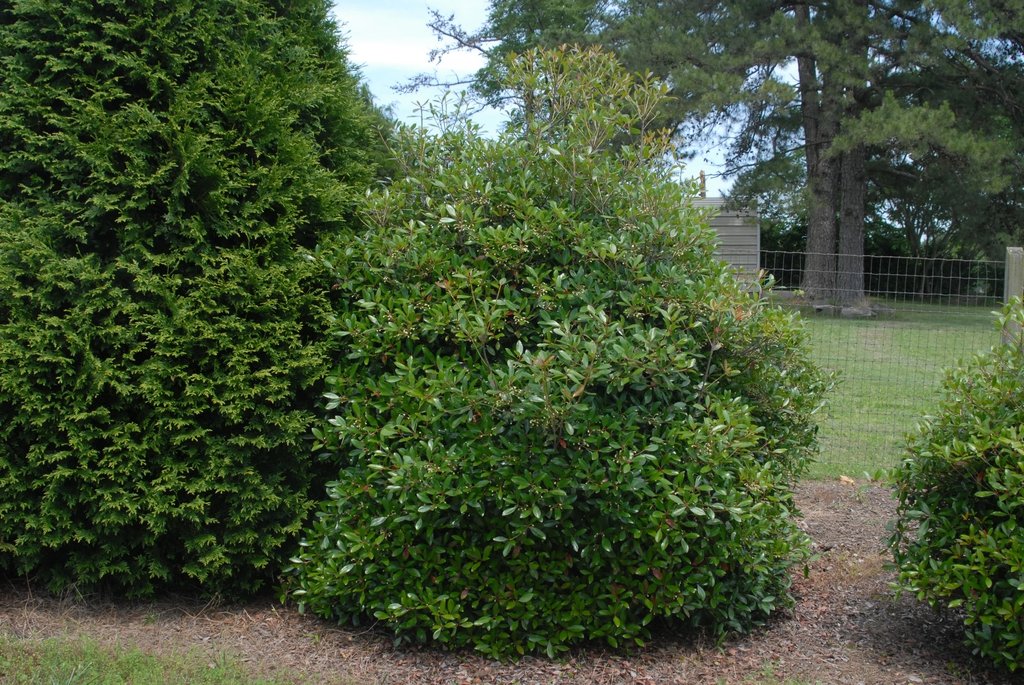As I assembled holiday arrangements today, I fondly remembered a hedging plant from my garden of many years ago, Red-Tip Photinia. In the early 1980’s, many southeastern gardens contained hedges of Photinia x fraseri, widely known as Red Tip after the reddish coloration of new growth. Red Tip fell victim to a fungal leaf spot that virtually wiped it out. Disease problems are exacerbated when large numbers of the same plants are located in a narrow area, called a monoculture.
Fortunately for us gardeners, a worthy replacement to Red Tip has surfaced in form of Cleyera, or Ternstoemia gymnanthera (tern-STROE-mee-uh jim-NANTH-er-uh). In some ways, Cleyera is better than Red Tip. It prefers neutral to acidic soil (no lime required). It is slow-growing with a mature height of 8-10 feet, which means it is low-maintenance. Consider it as a replacement for Leyland Cypress. It has a loose, open habit but it can be kept shorter and made denser by limited pinching or light pruning once per year. For faster growing specimens, look for the cultivar ‘Contherann.’
Cleyera prefers a bit of shade to prevent its leaves from scorching. In spring, Cleyera has small white flowers, followed by green berries that turn red in fall. Neither flowers nor berries will wow the observer. Instead, enjoy attractive glossy, bronzy-red new growth in spring, dark green summer leaves, and slightly bronzed fall leaves. While it will never be the star plant in the garden, it is an evergreen that makes a great privacy hedge choice for partly-sunny or partly-shady areas.
Cleyera is cold-hardy in zones 7-9. It tolerates a wide range of soil types. Avoid planting Cleyera in locations that are constantly wet.
Mid-summer leaves of Cleyera. Photo by Jim Robbins CC BY-NC-ND 4.0
New growth of Cleyera. Photo by Krzysztof Ziarnek, Kenraiz CC BY-SA 4.0
A mature specimen of Cleyera, Ternstroemia gymnathera ‘Le Ann’. Photo by Jim Robbins CC BY-NC-ND 4.0



